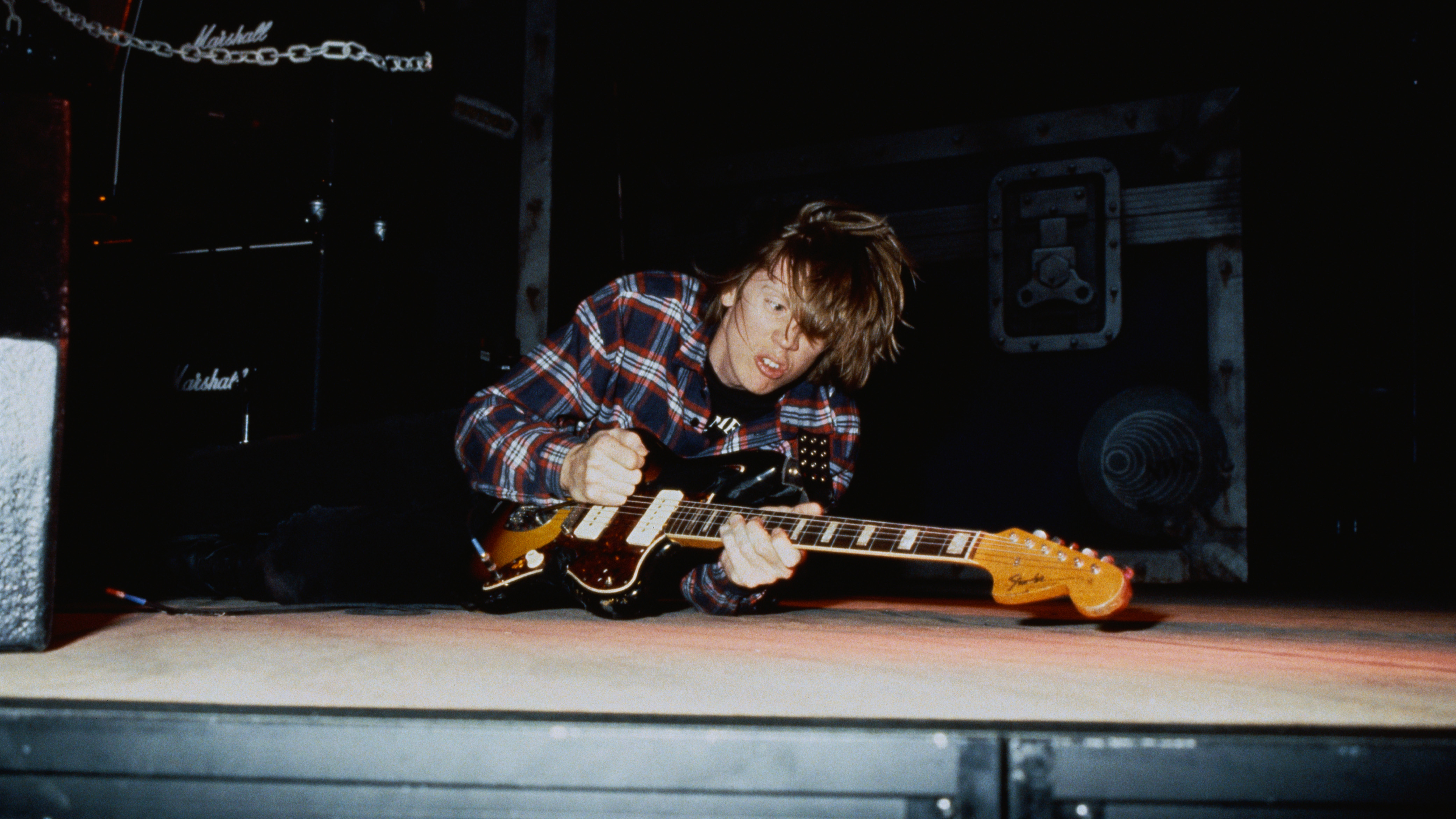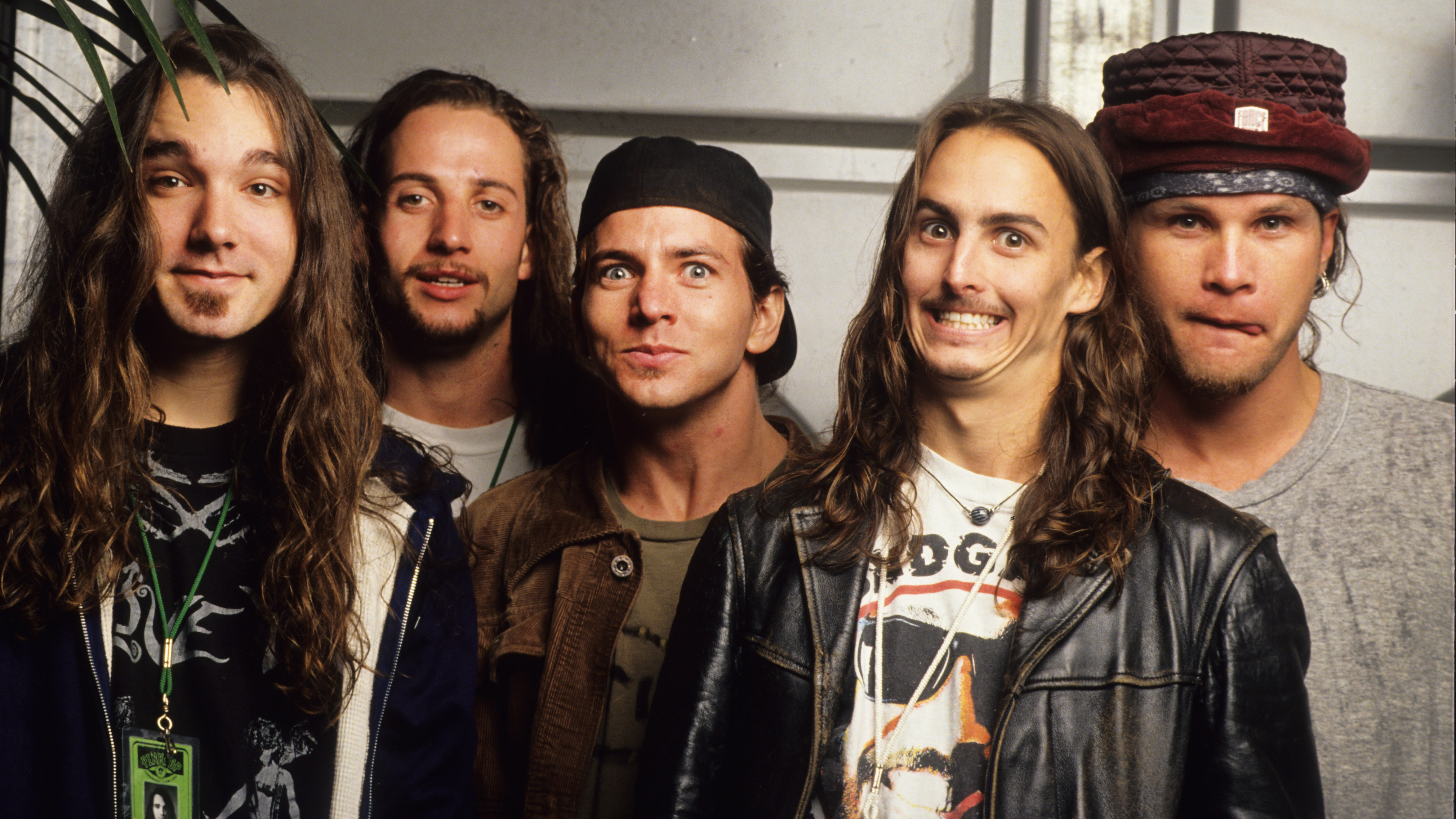5 songs guitarists need to hear by… Sonic Youth
A choice selection from one of the most influential catalogues in independent music…

Art-rock noiseniks Sonic Youth emerged from New York’s No Wave scene in the mid-1980 but belonged to no such convenient pigeonhole. Famed for their use of drastically altered tunings the band tempered their early, chaotic noise as their career progressed, adding a degree of melody and structure, while always retaining the ability to shock. They influenced every alternative scene that came along, dabbled in some of them, but always played games on their own terms with an instrumental freakout always waiting around the corner.
It’s now 12 years since Sonic Youth brought things to a close with 2009’s The Eternal album, but over a near-30-year career they made some of the most original guitar music the world has ever heard. Here we pick five of our favourites…
1. Death Valley 69 – Bad Moon Rising (1985)
The closing track of the band’s first full-length album is truly terrifying. It pairs Thurston Moore with NYC legend Lydia Lunch on furious vocals and explores the Charles Manson murders in its lyrics, and behind that lies some guitar work to rival any of the band’s most experimental works.
Played in F#, F#, F#, F#, B, E tuning, the song teeters on the brink of madness throughout, with the duelling guitars of Moore and Lee Renaldo conveying an increasing sense of horror as the song’s five minutes build to a crescendo approaching the four-minute mark that appears to resolve into a looped section with a minute or so to go but then explodes into a burst of noise that leaves emptiness in its wake. The sort of emptiness where the darkness resides.
2. Expressway To Yr Skull – Evol, 1986
Famously, Expressway To Yr Skull is Neil Young’s favourite Sonic Youth song. Another album closer (this time to 1986’s Evol), another track referencing Charles Manson and another masterpiece that manages to exude the essence of all that has gone before it.
The first two minutes of this seven-minute mini-epic sounds like a fairy conventional, prototype slacker rock song, but just after the two-minute mark it evolves into five minutes of foreboding, dissonant droning. Initially this is shot through with flashes of white hot guitar noise, but from the four-and-a-half minute mark you are alone with your thoughts and a constant, menacing drone that conjures up images of the damp, half-lit urban spaces we take a 20-minute detour to avoid on the walk home.
For the record, this one is in E, G#, E, G#, E, G#, and the original vinyl release had a lock-groove at the end to ensure that doom-laden guitar hum would last until you got up to lift the needle. What dreams would you have if you fell asleep halfway through this track?
Want all the hottest music and gear news, reviews, deals, features and more, direct to your inbox? Sign up here.
3. Teen Age Riot – Daydream Nation (1988)

Another seven-minute track, but this time the opener to the album widely regarded as Sonic Youth’s high watermark: 1988’s Daydream Nation. A perfect marriage of the band’s dissonant noise and increasing sense of melody to produce a genuine indie-rock classic that was chosen by Eddie Vedder as his favourite SY track on the band’s Hits Are For Squares compilation.
Vedder’s patronage is appropriate, as the song and the album that housed it proved both influential on the burgeoning grunge and alternative rock scene, and began to open the doors of acceptance in the mainstream of alternative music that his band Pearl Jam and Seattle cohorts Nirvana would blow open three years later.
The song’s quiet, ethereal introduction cranks up several notches with a cutting, distorted guitar riff and a driving beat that carries Moore’s melodic vocal performance throughout the song’s duration. There is still time and space for some instrumental deviations along the way, but Teen Age Riot is the first great 1990s alt-rock song, delivered two years early by a band that would influence everyone in the years that followed, from Nirvana and Smashing Pumpkins to Pavement and Beck. This one’s in G, A, B, D, E, G tuning.
4. Sugar Kane – Dirty (1992)
If Daydream Nation helped make the grunge explosion of the early nineties possible, Dirty was Sonic Youth’s chance to bask in the glory of what they had helped to create. With Nevermind’s Butch Vig at the production desk, the New Yorkers dialled back their more avant-garde tendencies to offer a more easily digestible version of their sonic mayhem.
Vig told Pro Sound in 2017: “I wanted it to sound like Sonic Youth but I wanted to get it a little bit more focused, and that was tricky. They were totally up for it but they were just doing what they do and they’re not always aware of what that is. So I was trying to make some of the songs a bit more concise, but I didn’t want to try to make them write three-minute pop songs.”

Sugar Kane is six minutes long, but Vig’s efforts to focus the band pay dividends. What starts as a straight ahead, catchy alt-rock single descends into and then ascends out of a classic, edgy, dissonant Sonic Youth instrumental breakdown before the three-minute mark. We are led there by a fairly straightforward descending riff on the guitar, but by three-and-a-half minutes that is lost in a squalling solo hurried beneath a thundering baseline.
After a foredooming period of quiet around for minutes, and ascending riff brings us back up as the rest of the band kicks back in, building to a wall of noise that gives way around five minutes in to the original riff. The vocals return and we’re back in the land of the familiar.
That Sonic Youth could deliver a radio-friendly, early nineties alt-rock anthem without losing the essence of what makes them so special was testament to their versatility (and Vig’s own talents). E, G, D, G, B, E for this one!
5. Do You Believe In Rapture? – Rather Ripped (2006)
Sonic Youth would only have three more years and one more album left in them after the release of 2006’s acclaimed Rather Ripped. For the most part this is a full-on rock record from the band, the band trading in some of their more experimental meanderings to deliver a more concise, cohesive album that nods back to their work on Dirty.
We’ve picked the blissed out Do You Believe In Rapture? as our final track, though, as a further illustration of the sheer versatility of the band and an example of just how many genres they managed to master without being sucked into.

We’re in D, D#, A#, D#, G, G here, and there is a hypnotic nature to the relatively clean playing here, the song’s chords treated with a touch of chorus and delay to place us firmly in the realms of post-rock, another genre influenced by Sonic Youth’s career output.
For a band know for its instrumental jams, they choose instead to accompany the music here with an equally blissed out vocal performance from Moore that lifts the song towards the heavens it evokes, but it is still the atmospheric guitars that do the hard lifting here.